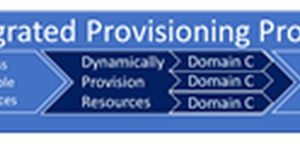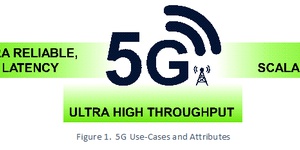
Whitepapers
NFV, KEY IOT ENABLER
The proliferation of Internet of Things end-points and the connectivity required for various verticals and solutions is exacerbating the profitability challenge for service providers and will continue to do so in the foreseeable future. The increase in operational complexity of service providers’ networks is a major factor in exacerbating the average revenue per user and margin challenges. Service providers’ infrastructures are not designed to handle the volume of transactions and scale of IoT deployments. New IoT traffic patterns and types, the need for ad-hoc connectivity and the need for carefully orchestrated and allocated storage, compute and networking resources have transformed the requirements for the service providers’ infrastructures.
As service providers prepare their infrastructure to meet the IoT generated requirements, network function virtualization can be a critical enabler and the logical option to pursue. NFV becomes a critical enabler because the resource efficiency and service agility provided by NFV is key to the service providers’ ability to offering rich, integrated, managed IoT services and move beyond a pure connectivity play.
Click for more information about Ray Mota.
Click for TelecomTV super panel's video, sponsored by Hewlett Packard Enterprise and Intel. The group, brought together an exceptional team of senior NFV experts in a lively and informative debate examining the proposition that IoT is a major driver for NFV in communication service providers' networks.
You might like similar whitepapers


Disruption Propelling Massive Changes in Video Market

The TCO Benefits of Distributed Broadband Services with CUPS

Using Open Virtual RANs in 5G

Key CommSoft Learnings from #MWC19

A TCO Comparison of Private WANs vs Managed Network Services for Enterprises

Middle-Mile Networks Capacity Requirements for Fixed Broadband

THE ECONOMIC BENEFITS OF IP TRANSPORT AT 400G

The Missing Guide in SP Managed Services Profitability

Broadband Access Transformation

The Economic Benefits of Juniper Apstra and CN2 in a Modern 5G Network

Hybrid Networks: Integrated Provisioning for Virtual and Physical Networks

Lenovo: Data Center Switch Solutions for Enterprise Data Centers

The Economic Benefits of Virtual Edge Services

TCO Benefits of Converged 5G Ready IP Transport

Mitigating Market Challenges in Telecommunications

AUTONOMOUS NETWORKS POWER INDUSTRY 4.0

The Economic Benefits of Distributed Broadband Services

Global Pricing for SD-WAN

Simplifying IP Networks

Orchestrating Dynamic Enterprise Services

MODERNIZING THE CABLE SERVICE DELIVERY INFRASTRUCTURE

Huawei ADN Solution Approach to Implementing Autonomous Networks

The Evolution of Broadband Traffic: A Forecast for the Americas, EMEA, and APAC Regions

Nuage/ALU on the VNS Solution in an SP Context

Always On, Active Analytics and AI for Superior Performance in Digitally Powered Enterprises

5G Service Assurance: The Case for AIOps

Building Open, Scalable Service Delivery Infrastructures

ECONOMIC BENEFITS OF THE VMWARE TELCO CLOUD AUTOMATION AND HORIZONTAL INFRASTRUCTURE

THE POWER OF DIFFERENTIATION: BUILDING BROADBAND FOR 2021 AND BEYOND

Accelerating Revenue and Innovation in CSPs' Distributed Clouds

THE BUSINESS CASE FOR ADAPTIVE IP

Comparing Broadband Network Architectures in the Evolving Connectivity Landscape

Achieving End-to-End Intelligence in the Cable Access Network

The Right Container Platform(s) for Modern OSS and BSS

Building the Business Case for AI in Wireless Networks: Juniper Mist AI TCO Report

Propelling Operators to L3 Operations Autonomy and Beyond with Huawei ADN

INTRODUCING xHAUL REWRITING THE PLAYBOOK FOR TRANSPORT NETWORKING IN THE RAN IN 5G

Maximizing Efficiency Using Standards-Based, Model-Driven Infrastructures in NFV Deployments

The Driving Factors behind the Telecommunications Shift to Cloud Metro Networks

Virtualization Journey: Cable Companies Are on Their Way

AUTONOMOUS NETWORKS: NOW IS THE TIME

Huawei Autonomous Driving Network: Standards-Based but Differentiated

The Economic Benefits of Automating Capacity Optimization in IP Networks

5G Service Assurance: The Case for AIOps






